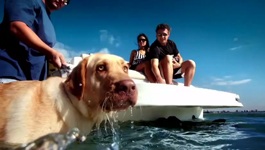Boating Lifestyle
Boating Lifestyle
There is so much to love, and learn, about boating. That's why we created this library of articles, videos and blog posts to help you throughout your adventures.
Ten Tips for Clean and Green Boating

- Prevent oily discharges from the bilge. Keep your engine well tuned to prevent fuel and oil leaks. Secure an oil absorbent pad or pillow in your bilge and under your engine where drips may occur. Check the pads often, do not let them clog the bilge pump, and dispose of them as hazardous waste at a marina or local hazardous waste collection center.
- Spill-proof your oil changes. For oil changes, use an oil change pump to transfer oil to a spill-proof container. Wrap a plastic bag or absorbent pad around the oil filter to prevent oil from spilling into the bilge.
- When fueling, stop the drops! Prevent fuel spills by filling fuel tanks slowly and using absorbent pads or rags to catch drips and spills. Don’t "top off" or overflow your fuel tank. Leave the tank 10% empty to allow fuel to expand as it warms.
- Do not add soap. Never use soap to disperse fuel and oil spills. It increases harm to the environment, and it is illegal.
- Minimize boat cleaning and maintenance in the water. If possible, save maintenance projects for the boatyard. When performing work on the water minimize your impact by containing waste. Use tarps and vacuum sanders to collect all drips and debris for proper disposal.
- Reduce toxic discharges from bottom paints. Minimize the discharge of heavy metals found in soft-sloughing antifouling paints by using a less toxic, or nontoxic antifouling paint. Use only non-abrasive underwater hull cleaning techniques to prevent excessive paint discharge. Remember, dry storage reduces the need for antifouling paints and saves money.
- Dispose of hazardous waste properly. Dispose of paints, batteries, antifreeze, cleaning products, oil, oil filters and other hazardous wastes at a hazardous waste collection facility or event.
- Plan A-head! Manage sewage wastes properly. Never discharge sewage within 3 miles of shore. Use harbor pump-out stations and shore-side facilities. If you don’t have an installed toilet, use a port-a-potty and empty it at a harbor dump station or bathroom.
- Stow it, don’t throw it! Keep your trash on board. Never throw cigarette butts, fishing line, or any other garbage into the ocean. Take advantage of shore-side facilities to recycle plastic, glass, metal, and paper.
- Reduce Greywater discharges. Use a phosphate-free biodegradable soap to minimize the impacts of greywater on the marine environment. Also minimize discharge by doing dishes and showers on shore whenever possible.
Content courtesy of www.earth911.com


